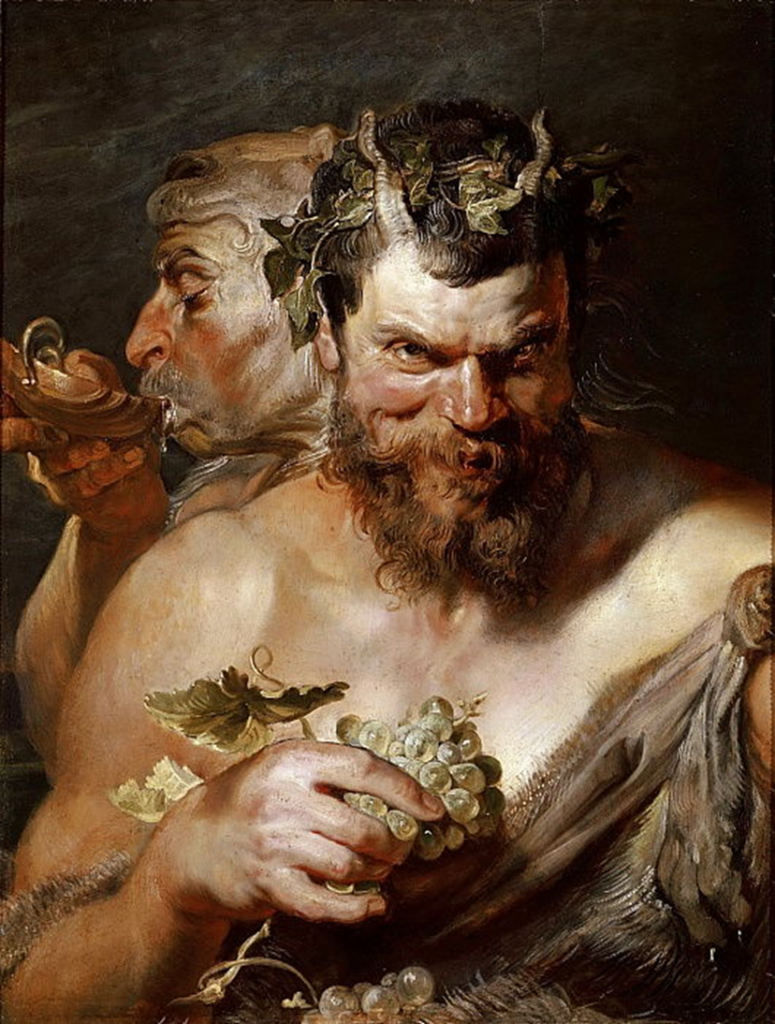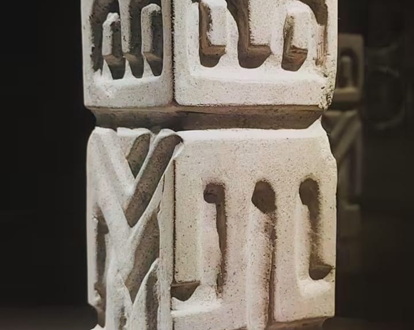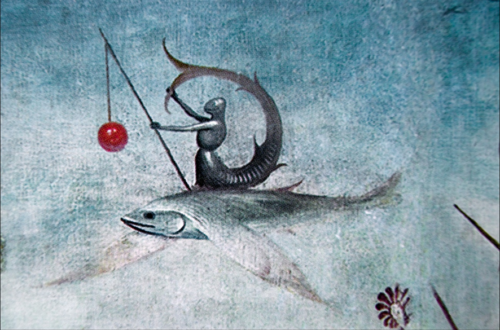noviembre 24, 2023
Relational and Social Constructionist Consortium of Ecuador (IRYSE)
Diego Tapia Figueroa, Ph.D. and Maritza Crespo Balderrama, M.A.
We live, organize, and give meaning to our lives through socially constructed narratives. Our stories are not formed in isolation but are relational. The meanings and interpretations that we ascribe to the events and experiences of our lives -including our own personal identity- are created, experienced, and shared by individuals who are in relationship and dialogue with each other.
(Harlene Anderson, 2013).
«Relational ethics, from the perspective of social constructionism, includes dialogue, collaboration, and a whole range of relational practices. I need other people to coordinate the construction of the world with me; to be relationally responsible is to be in harmony with the relationship itself.»
Sheila McNamee (2015)
«I am connected therefore I am.» (Kenneth J. Gergen)
Unlike a monologue, dialogue involves being changed by the process itself.
«Dialogue concretizes the meaning of a new reality and lays the foundations for alternative forms of action… A dialogue can be considered transformative when it promotes generative spaces and concerted action.» (Dora Fried Schnitman, 2000)
As Dora Fried Schnitman explains: Social constructionism understands that the substance of the social world is conversations, defining them as designs of joint activities similar to games. A network of relationships. At birth, we bring with us the potential to learn how to be participants in these activities. We are not only epistemic beings but social beings. Our first task is to figure out how to act, how to proceed, and what to expect from others.
According to the social constructionist perspective, contexts are of utmost importance: we always act from and towards contexts. The context in which we find ourselves prefigures how we should act.
Process-Generating Questions
What is the most important thing we should know about you, to understand the type of person you are; what is the most significant thing you would like to tell us about yourself, to understand your story?
What are your best hopes for this conversation we will have here, for this work we will do together?
What are we here for? Am I here, for…? It is interesting to know the particular reason why each one is here.
How do we look, listen, and respond?
What would have to happen so that when this is over, you feel satisfied?
What internal dialogues were you having while listening to me?
How can you contribute, in a significant way, so that what happens here is what you expect, and what you would like?
Can you think of a learning moment, a different reflection, that you are going to take with you from this meeting?
A question in couples therapy, to each of the participants: what do you imagine you could contribute, say and do differently, to build the relationship you would like to have?
How to propose a language with which we invite others to feel involved?
From our initial questions: are they still there? Have they been transformed; is there something you want to return to?
How do we invite a person to enter into a relationship?
How do you see a community in which we all feel understood and included?
How to continue this conversation to build something meaningful?
What future would you like to build from your best hopes?
Reflection on what you experienced: what is useful to you from here; what are you leaving with?
These are processes of joint construction, with the community. We do it by talking to connect, understand each other, and relationally be the people we would like to be with ourselves and with others. As Harlene Anderson (1999, p. 151) invites us: «The objective -according to Gergen and McNamee- of an exploration of relational responsibility is not to change one or another defective person or to resolve a conflict. Rather, it is about expanding the spectrum of voices –»relational realities»– that are accepted in the conversation. Become more responsible, and pay more attention to yourself (…).»
In the words of Kenneth Gergen (2016): «What is at stake is not repairing the mind, from a relational perspective, but relational transformation…». Social constructionism, as noted by Kenneth Gergen (2014) «…does ask professionals -of all kinds- two central questions: how and to whom is what you do useful? And what are the socio-political-ethical- implications of taking the proposed reality seriously? Furthermore: «…this process…is inevitably a form of social or political activism: any action carried out in a society thus forges its future.»
Our central premise is that the natural consequence of dialogue or dialogistic conversation is change or transformation. Starting from this premise, the question becomes important: how can therapists produce these conversations and relationships with their clients, so that both parties can allow access to their creativity, and open new possibilities where none seemed to exist before? (Anderson, 2013. p. 60).
In the therapeutic field, as well as in other aspects of life, a philosophical position is fundamental; in the case of social/relational constructionism, it implies the conviction that beyond judgment or preconceived ideas that could be classified as «truth «, pragmatic actions are proposed for the common well-being, the improvement of the quality of life of all, the openness to multiple voices and diversity, and the commitment to the construction -from a chosen space- of consistently sustained relationships based on respect, acceptance, trust, affection, recognition, and relational ethics.
The people we would like to be with ourselves and with others
Dora Fried Schnitman (2017) states that: «it is about focusing on the positive and making it grow. This position involves an openness to the new, the unexpected…The place of the generative operator is that of the facilitator or manager of a process that provides new possibilities for understanding, coordination, interaction, and action. It attends to the responses of the consultants, promoting transformative processes: new knowledge and actions.”
They are learning processes, in which unexpected meanings are generated because experience is connected to discoveries. Creative processes are capable of noticing what is different, and of inviting people to a space of creativity; permanent deconstruction processes occur to reveal power relations. Confront, and disrupt the habit of not questioning ourselves. Dialogue processes should be encouraged to give a place to differences so that they acquire new meanings when reflected in their multiple and complex relational contexts.
For Sheila McNamee (2016-2018) this means: «To create dialogic situations and contexts the only useful thing is: curiosity, being open to listening to the difference, being reflective about what I am thinking about the situation.» …How to get involved in a dialogic situation? With Radical Presence: What do we do together to be present with each other in the situation? It is not only being present with everything that I am and open to the other, but also accepting the vulnerability of the situation and wanting, wanting to be in a challenging situation, where the goal is not to impose what I think or accept. what the other thinks, but how we jointly create a space where the two parties can participate and meet.«
Four questions from Barnett Pearce, useful for being with «Radical Presence»:
What are we doing together? Instead of asking ourselves: What is this person doing in this situation? We ask ourselves instead: What are we doing together that isn’t working?
How are we doing this, is everyone involved?
Who are we becoming as we do this; how are we transforming?
How can we do this in a better way?
These questions help us stay in a self-reflective process, in which we do not focus on solving the situation, but rather we focus on how, together, we work to do what we are doing (therapists and consultants). «Radical Presence (RP)» involves humanizing ourselves in the relationship and putting aside theories, techniques, and tools and concentrating on what we are jointly producing at this moment; what it is that produces new meanings and expands relationships; and, how «RP» creates infinite possibilities for change and transformation.
Build, as therapists, a relationship that is meaningful for the client and that helps them find and build other meaningful relationships. We should be able to act in the same way, with professional responsibility, as well as in our entire life; being able to commit and invest time in relationships. Stop thinking about what you can’t do and start thinking about what you can do. Don’t get hooked on what you can’t, but look at the possibilities and how to create them.
Being radically present with ourselves means recognizing our limits and the possibilities of creating dialogic spaces where it is possible to generate transformations in relational contexts. We have the perspective of understanding stories in a rhizomatic way, which means that stories become more complex and expanded, enriched with details that connect what is significant, and what is different; we are interested in listening, not only to the content, which is important, but, above all, to the process, the connections, the relationships, the possibilities, the future.
The image of the rhizome also serves as a compass to ask, listen, and understand the stories they tell us, with honesty, generosity, and courage, in each therapeutic encounter. Relational Ethics also contributes to this: instead of enclosing and limiting what we are doing, we open the possibilities of everything that can be done and that together we can build. In different ways, our challenges are to accept and embrace uncertainty and dialogue starting from complexity, by trusting in relationships.
In the context of therapeutic processes from a relational standpoint, specifically in relational constructionism, our primary approach to co-therapy involves engaging in dialogue. Dialogue serves as a tool for us to place meaning into context, and comprehend, and encourages reflection on how we can contribute our resources to the conversation to foster transformation.
These co-therapeutic perspectives, as explained by Harlene Anderson, 2016: » …are focused on what happens «between» people, because that is where relational processes arise. This philosophical position becomes a philosophy of life. A vision of the world that does not separate the professional from the personal; it becomes a way of «being with others.
Social constructionist/relational posture and perspective for co-therapy
• Curiosity -to understand and connect-;
• Respect that dignifies and legitimizes;
• Acceptance (respect for your being);
• Trust in relationships, in dialogue, in the conversational process;
• Reflective dialogue with meaningful questions;
• Deep listening and understanding;
• A fine sensitivity and relational connection;
• Recognize and legitimize differences;
• Leave the position of the expert, the hierarchy, and the duty to be
• Creativity and imagination;
• Good sense of humor.
How do we propose co-therapy? And, what happens when the therapies are not as imagined, or the client’s expectations are not met?
Our co-therapeutic space involves a challenge linked to the breakdown of tradition in psychotherapy. The co-therapy that we carry out is about recognizing oneself with one’s resources and one’s vulnerabilities. And, at the same time, have confidence in the other, in the colleague, in their resources, and in their abilities; which are in favor of the transformation process of the consultants. Intellectual, professional, and human honesty -our integrity- is one of the constants that sustain our proposal.
On certain occasions -beyond our philosophy of life and work, our position of respect, and relational/professional ethics- we have also experienced disappointment (we understand that it has been mutual) on the part of a client -one or two times perhaps in the last 7 years- who thought that therapy with us should be the occasion to perpetuate or legitimize their position in their relational context, in favor of specific interests and against other specific interests; and that we had an obligation to support only their «truth.»
By not being complicit with this strategy of victimization, or by not joining a network of the cover-up of abuse, mistreatment, exploitation, or injustice, or by not responding to their demands and their perception that «we had to change», a couple declared themselves outraged by our «lack of professional ethics.» Some of these people tried to discredit us or disqualify our human and professional commitment. With accusations like: » He wanted to brainwash my partner into getting a divorce; my partner told me that they asked him: what would happen if we stayed together? What would happen if we got divorced?»
It is usually paradoxical that whoever wanted to spread this gossip, in their last session said goodbye to us, thanking us for the positive contributions we have made in their life, in their relationships, etc. Strange. The complex human condition.
It made us sad, at the time, for not having been able to contribute positively to building peace in their lives and relationships. We did the best we could with what we had, we fulfilled our professional responsibility, which is to do our job well (dialogue with reflective questions), trusting that people are responsible for their own lives and that our clients have the resources to solve their problems; the response of this or these specific people, also to our actions and words, is their responsibility; and, obviously, from the epistemology with which we approach therapeutic processes, it is also our responsibility.
It serves as a process of differentiation, to fearlessly understand and connect; as well as to reflect judiciously, and at the same time, not to get hooked on the «unresolved issues» of another person. Being able to be, interact, participate, and communicate without anxiety.
They are lessons to work with human and intellectual humility, without losing hope, based on testimonies and evidence that many other people have generated transformations in favor of their relational well-being with the joint participation of us as their therapists. And, life goes on. It helps us recover the meaning of something Goethe said: «Only what is fruitful is true.» With our relational awareness, we recognize that what is considered «true» often aligns with modernist principles, a perspective that relational constructionism has revealed as reductionist in nature.
For this reason, it is very useful for us to permanently maintain the spaces of supervision, inter-vision, and clinical co-vision, in which -in addition to contributing to the teams with which we share this relational constructionist philosophy- we share experiences of our «failures», to receive feedback from colleagues, who nourish our therapeutic practice with their different perspectives. They are dialogic spaces for critical and self-critical reflections -assertive, purposeful, creative – to delve deeper into what «not to do» and what contributes and is useful. And, we are open to continuing learning; it is one of our passions, which nourishes our conversations and actions, which opens possibilities.
Co-therapeutic practice is, then, the space for dialogue and collaborative/generative learning, and for working together -therapists and consultants- in a conversational process that transforms us all, in each encounter, every time.
We approach the therapeutic session with joy because we are sure that it is a privileged and unique opportunity for joint learning and to contribute to others; we consider ourselves as interlocutors of the consultants, as hosts to initiate a dialogue based on curiosity, acceptance, and respect for those who come to tell us their stories and also for the colleague with whom we have the privilege of sharing.
We are curious about our client´s words and also about what our colleagues can contribute differently to the dialogue, to understand and learn from the strengths that they will mobilize, creatively, during each session.
We ask ourselves from this relational ethics: could we together do something more, a significant difference that contributes to creating a deep connection, a new meaning to one’s own life? How can our questions contribute to unraveling the relational knots that oppress people’s lives?
In co-therapy, it is not one or the other who is the protagonist, those who lead the processes are the clients; therapists accompany them in their process, trusting in people and processes. We feel comfortable and free, working from social/relational constructionism, which invites a critical stance, and involves curiosity about the different ways we can do things; besides involving an attitude of creativity and openness.
Everything we do and say is something we do and we give meaning to in the relationship. Therefore, what invites us to think is: if we work with people, can we see what people need? Because we have the responsibility to ask for their points of view and have confidence in relationships, in people, and in their ability and right to choose and decide for themselves.
Suggested bibliography:
Andersen, T. (2013). A sentence in five lines. On the production of meanings from the perspective of relationship, prejudice, and bewitchment. In Deissler, K. & McNamee, S. (Ed) Filo and Sofía in dialogue. (pp. 76-83) Ohio, USA: Ed. Taos Institute Publication.
Anderson, H. (2013). Collaborative language systems and collaborative relationships: A postmodern approach to therapy and consultation. In Deissler, K. & McNamee, S. (Ed) Filo and Sofía in dialogue: the social poetry of therapeutic conversation. (pp. 58-67) Ohio, USA: Ed. A Taos Institute Publication.
Anderson, H. (1999). Conversation, language, and possibilities. A postmodern approach to therapy. Buenos Aires, Argentina Amorrortu Editorial.
Fried Schnitman, D. (Ed.) (2017), Dialogues for transformation: development of projects and generative research aimed at building futures in Ibero-America – Volume 3. Ohio, USA: Ed. A Taos Institute Publication. WorldShare Books.
Fried Schnitman, D. (ed.) (2000), Conflict Resolution. New Designs, New Contexts. Buenos Aires, Argentina, Granica Editorial.
Gergen, K. (2016). The relational Being. Beyond Self and Community. Bilbao, Spain: Editorial Desclée de Brouwer, SA
Gergen, K. (2014). From Mirroring to World-Making: Research as Future Forming, Retrieved from: https://taoslearning.ning.com/groups2/global-relational-research-network/virtual-symposium-2018.
Mc Namee, S (2016). Resources for Facilitating Differing Worldviews, Taos Institute December 2016. Retrieved from: http://www.taosinstitute.net/Websites/taos/files/Content/5868649/Resources_for_Facilitating_Multiple_Worldviews_(McNamee).pdf
IRYSE (2018) Blog of the Relational and Socioconstructionist Institute of Ecuador (IRYSE): https://iryse.org/

English translation by Bruno Tapia Naranjo.



